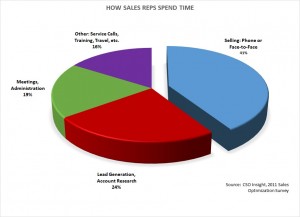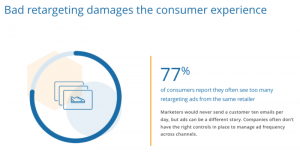“Hold the vision; trust the process.”
— Author unknown
Marketers are often eager to get started on the road to Demand Process Transformationâ„ . We tell them it won’t be easy and that only by way of a structured process will we get to the finish line and accomplish the established goals. However, the eagerness to start the process builds and we all have to fight the temptation to jump ahead, as building a strategy takes time. Three common mistakes can wreak havoc on demand generation planning, no matter how ready you think you are to move forward.

Not putting strategy first:
By jumping ahead in the process and focusing on tactical outputs, it’s easy to break the cardinal rule of “strategy first.” One of the biggest errors we see in this regard is the realization that new content is necessary, and the resultant head-first dive into the process. However, without sound strategy that puts the buyer as the focal point, new content is at risk of missing the mark with target personas and ultimately, buyers. Strategy needs to drive the content, by first unearthing the discrete steps of the buyer’s journey, how this journey aligns with buyer dialogues and pain points, and when strategic content should be served vs solution-specific content. A research-based, customer-centric strategy must always drive the development and approach of any Demand Generation program. In trying to work ahead of this critical strategy phase, marketers may find themselves taking three steps forward and two steps back.
Not realizing the importance of a standard approach:
In his book Driving Demand, ANNUITAS CEO Carlos Hidalgo cites the importance of a standard approach to Demand Generation. “In order for the company to see a change and align the people, process, content and technology with [their] buyers, [they] needed a plan, and the process would be more complex than replicating an existing strategy.” Indeed, any company moving toward transforming demand generation must take all of these elements into account. The Demand Process Transformation looks at people, process, content, technology and data as building blocks to a greater whole. If you attempt to subvert this standard approach by bypassing one or more of these components, the result will be a program that can’t deliver to its full potential.
Not having patience:
Of course, the number one reason for not trusting in the process is the desire to rush results. However, you cannot rush client interviews, as you will not collect enough customer insights to have an informed buying process and resultant content strategy. You cannot rush content outlines as you will not provide clear direction to your writers for quality content. You cannot rush lead management workshops as you will not have a process informed equally by Sales and Marketing stakeholders. You cannot truncate a typical six to eight month program development and implementation process down into a matter of weeks. It will leaves little time to collect the data necessary to inform a customer-driven strategy. Know and trust that all elements of the program are built in a sequence to provide a quality foundation for additional related activities.
By trusting in our standard approach to Demand Process Transformation, ANNUITAS clients realize at least a 3.3% Engaged to Opportunity rate, which is higher than the mean cited by both Forrester and Sirius Decisions. Sure, trusting in the process requires change and that B2B marketing organizations step outside their comfort zone. It also may require a few leaps of faith. However, know that there are rewards. Big rewards in the form of highly qualified leads and greater conversion rates, leading to sustainable revenue – to those willing to take the risk. A strategic Demand Generation process takes time to develop and implement, but the results will be worth it in terms of revenue and buyer engagement. Trust the process.
Business & Finance Articles on Business 2 Community(41)
Report Post






